Results 8,311 to 8,320 of 12094
Thread: Anandtech News
-
06-21-18, 01:46 PM #8311
Anandtech: SilverStone Preps IP68 Water- and Dust- Proof Enclosure for 2.5-Inch Drive
Rugged as well as water/dust-proof hardware usually comes in specially designed factory-sealed enclosures and is sold at a premium. SilverStone believes that if an enclosure is made right, it is good enough not only for factory assembly, but also for DIY builders.
Interest towards rugged water and dust-proof storage hardware is rising these days as people tend to carry more external storage devices with them when travelling and realize value of their data. As an enclosure specialist, SilverStone is trying to satisfy demand for such mobile storage solutions by building its own rugged IP68-rated Mammoth MMS02 enclosure, which spots a USB 3.1 Gen 2 interface (10 Gbps) for 2.5-inch storage devices.
SilverStone’s MMS02 is bigger than your typical chassis for 2.5-inch SSDs/HDDs because the company wanted to ensure that it provides fine isolation against liquids and dust even when assembled by an end user. SilverStone’s label on the MMS02 says that the unit is “military-grade IP68 water resistant and dust proof”, but since IP ratings are applied by manufacturers after internal testing, the IP68 should technically be applied by the end user after assembly and testing. Meanwhile, the IP68 rating means that a unit is completely safeguarded against dust and is protected against submersion beyond one meter for one hour.
At Computex SilverStone demonstrated its Mammoth MMS02 by submerging it into a small tank of water, but keeping in mind that it had to survive there for a day, the showcase clearly validated that if assembled correctly, the MMS02 is hermetically sealed. The chassis is made of aluminum, so it is not subject to stains even if left wet for prolonged periods of time. Meanwhile, since aluminum is lighter than stainless steel, it helps mobility. However, it is also softer, so it is not as rugged against physical damage.
Unlike most enclosures for 2.5-inch storage devices, SilverStone’s Mammoth MMS02 comes with a USB 3.1 Gen 2 interface providing up to 10 Gbps of bandwidth (depending on the chip used, but it is certainly higher than 5 Gbps provided by regular chassis) and therefore is better suitable for fast SSDs.
SilverStone’s Mammoth MMS02 is already listed on the company’s website, so expect it to arrive to store shelves in the coming months. Pricing will depend on multiple factors, but since it is a unique IP68-graded enclosure, it will cost more than regular chassis for 2.5-inch devices.
Want to keep up to date with all of our Computex 2018 Coverage? 
Laptops
Hardware
ChipsFollow AnandTech's breaking news here!
More...
-
06-21-18, 03:14 PM #8312
Anandtech: Shuttle Shows Off Coffee Lake-Powered Barebones Mini PCs
Shuttle is largely considered to be the farther of the modern barebones mini PC market, as the company was the first to mass produce such products in the early 2000s. Nowadays Shuttle has numerous rivals and its positions are not as strong as they used to be. Meanwhile Shuttle is gradually recovering ground by developing competitive products aimed at performance-demanding users. At Computex, the company demonstrated a lineup of new barebones mini PCs for Intel’s Coffee Lake processors.
Shuttle’s lineup of Coffee Lake-powered PCs demonstrated at Computex consisted of four systems: two smaller and thinner computers that are designed for CPUs with mainstream TDP, as well as two more traditional XPC Cubes for PCs with expansion capabilities. The systems are based on Intel’s H310 and H370 chipsets, so they are not intended for enthusiasts who would like to overclock their CPUs. Though as SFF PCs are not generally designed for overclocking to begin with, using the H370 is hardly a downside for a compact system.
The ultra-compact XPC slim DH310 and DH370 barebones come in a chassis measuring 190×165×43 mm and support Intel’s 65W LGA1151 v2 processors, up to 32 GB of DDR4-2666 memory (two SO-DIMMs), an M.2-2280 SSD, and a 2.5-inch/12.5-mm SSD. Both systems rely on custom motherboards that cannot be upgraded, but which are key to how Shuttle is able to make the PCs so miniature. I/O capabilities of the systems are pretty regular: two GbE ports (driven by Intel controllers), an optional 802.11ac Wi-Fi, an SD card reader, four USB 3.1 Gen 1 headers, four USB 3.1 Gen 2 connectors, two DisplayPort 1.2, and one HDMI 2.0 output, and so on. As for power. the UCFF barebones are outfitted with 90 W PSUs.
Meanwhile The not-so-small Shuttle XPC cube SH310R4 and the SH370R6 measure 332×216×198 mm and support Intel’s 95W Coffee Lake processors. These machines can accommodate two or four DDR4-2666 DIMMs (32 or 64 GB in total), a PCIe 3.0 x16 graphics card, a 5.25-inch ODD, two 3.5-inch HDDs or SSDs, an M.2-2280 SSD, and a PCIe 3.0 x4 add-on card. As for I/O capabilities, these systems feature one GbE port, an optional M.2-2230 Wi-Fi module, 12 USB headers (USB 2.0, USB 3.0, USB 3.1), 5.1-channel audio, two DisplayPort 1.2, one HDMI 2.0 outputs, and so on. The Coffee Lake-based Shuttle XPC barebones come equipped with 300 W PSUs, so they can easily handle not only six-core processos but also higher-end graphics cards as well as fast power-hungry SSDs.
Shuttle’s upcoming XPC slim and XPC cube PCs featuring Intel’s 300-series chipsets are not yet listed on the company’s web site, so it is hard to say when they are set to hit the market. It is safe to assume that Shuttle will make its Coffee Lake-powered barebones available this year and will most likely try to start selling them during the back-to-school season, though this has yet to be confirmed.
Want to keep up to date with all of our Computex 2018 Coverage? 
Laptops
Hardware
ChipsFollow AnandTech's breaking news here!
More...
-
06-22-18, 08:13 AM #8313
Anandtech: Colorful to Branch Out to Memory Modules
One of the surprises that this year’s Computex brought was renewed interest of various hardware suppliers towards memory modules. We saw GIGABYTE and Antec launching their Aorus and Antec memory respectively, but they were not the only newcomers. Colorful, one of the world’s largest makers of graphics cards, is set to diversify its lineup of products with memory sticks later this year.
Being a newcomer, Colorful is not going to compete for the ultra high-end of the DDR4 DIMM market against renowned suppliers, but its lineup of products will still be pretty wide. The company intends to offer 8 GB and 16 GB DDR4 DIMMs rated up to DDR4-3600 and targeting platforms with dual-channel memory sub-systems. In line with the latest trends, the modules will be outfitted with aluminum heat spreaders of different colors (red, blue, yellow, purple, metallic, etc.) and with LED or even RGB LED lighting.
Colorful said at Computex that its iGame memory modules will be ready for the overseas markets by the end of the year. Therefore, expect the company to finalize their specs and prices towards late 2018.
One of the noteworthy things about Colorful’s announcement of memory modules is a promise to launch them overseas. Meanwhile it is important to note that the company’s graphics adapters are not available on all markets. For example, it is not easy to find Colorful’s video cards in the U.S. Since the company mentions overseas markets in its announcement, perhaps, this may indicate that Colorful is going to be more active on these markets in general than it is today.
Related Reading
Buy Colorful GTX 1050 Ti Mini on Amazon.com
Want to keep up to date with all of our Computex 2018 Coverage? 
Laptops
Hardware
ChipsFollow AnandTech's breaking news here!
More...
-
06-22-18, 09:06 AM #8314
Anandtech: Corsair Launches New K70 RGB MK.2 and STRAFE RGB MK.2 Mechanical Gaming Ke
Corsair recently announced the release of their new K70 RGB MK.2 and Strafe RGB MK.2 gaming keyboards. The keyboards come equipped with 100% Cherry MX mechanical switches with both offering a variety of switch types. Each includes per-key RGB backlighting, dedicated media keys, and onboard profile storage for taking the configuration anywhere. The K70 and STRAFE keyboards look to fill out more of their premium lineup of keyboards with pricing coming in at $140 on up.
The K70 RGB MK.2 is a full-size keyboard with number pad and based around an aluminum frame that Corsair says is lightweight, rugged, and durable. The keyboard includes FPS and MOBA keycap sets that are textured and contoured for easy location of the primary ‘gaming’ keys. Along with the keycaps, the keyboard has dedicated volume and multimedia controls allowing users to quickly adjust audio without jumping out of the game. These buttons consist of a volume wheel, mute, stop, play/pause, along with forward and reverse keys. Also included is a detachable soft-touch palm rest that is 25% larger and textured to improve grip and comfort.
If the black K70 RGB MK.2 doesn’t tickle your fancy, they also offer a K70 RGB MK.2 SE with a silver anodized brushed aluminum frame and white keycaps while using the Cherry MX Speed keys. The silver and white combination makes for a bright keyboard for sure. Other than that, the features are the same between the regular and SE version of the board.
Buy Corsair K70 RGB MK.2 (MX Brown) on Amazon.com
The K70 RGB MK.2 also has per-key programmability for macros Corsair says is for enhanced functionality. Using the iCUE software, users are able to access nine different effects as well as synchronizing with compatible Corsair peripherals for RGB illumination. It includes 8MB of onboard storage for taking macros, lighting profiles, and shortcuts wherever the keyboard goes. Key choices include Chery MX Red, Brown, Blue, Silent, and Speed keys offering users a wide variety of key types.
The STRAFE RGB MK.2 keyboard is intended to be a low-noise mechanical keyboard for users who prefer silence. The STRAFE has options of Cherry MX Red or MX Silent keys (up to 30% reduced noise) as opposed to the K70 which gives users more choices over their switches. It also includes FPS and MOBA keycap sets as well as 100% anti-ghosting capabilities with full N-key rollover just as the K70 RGB MK.2 does. The STRAFE RGB MK.2 also has per-key programmability for macros and the 8MB of internal storage with its lighting handled by the iCUE software. In the end, these keyboards are quite similar with key-type being one of the few differences as well as build materials with the STRAFE using a plastic frame compared to aluminum on the K70.
The biggest difference between these boards, outside of switch options and materials is in pricing. The STRAFE RGB MK.2 is priced at $140, while the K70 RGB MK.2 and K70 RGB MK.2 SE are priced higher at $170 and $180 respectively. All three boards are available now from the Corsair website and other e/retailers.
Related Reading:Corsair K70 RGB MK.2 and STRAFE RGB MK.2 Mechanical Keyboards K70 RGB MK.2 / MK.2 SE STRAFE RGB MK.2 Style 104 Keys, Wired Cherry MX Switch Options MX Red, Brown, Blue, Speed, Silent MX Silent, Red Construction Aluminum Plastic Onboard Storage 8MB with Hardware Playback Lighting Per-key RGB Lighting Report Rate 1000 Hz Rollover Full Key, 100% Anti-Ghosting Software Corsair iCUE Controlled Detachable Wrist Wrest? Yes Textured Keycaps WASD & QWERDF Multimedia Controls Dedicated, Plus Volume Scroll USB Pass-Through Yes, USB 2.0 Price $170 / $180 $140 ($150 Silent Keys) Warranty 2 Years - Cooler Master Unveils CK620: A Thin Wireless Mechanical Keyboard
- ROCCAT Unveils Vulcan Mechanical Keyboard: Titan Switch, AIMO Lighting
- Riotoro Prism Gaming Mechanical Keyboard Review: Making a Strong Debut
- ROCCAT Launches Horde AIMO: "Membranical" Keyboard
- MSI Reveals Vigor GK80 and GK70 Gaming Keyboards: Cherry Red RGB Switches, Aluminum Chassis
- The HAVIT KB395L RGB Mechanical Keyboard Review: Marvelous Mechanical Minimalism
- Best Mechanical Keyboards: Holiday 2017
- The Kinesis Freestyle Edge Gaming Mechanical Keyboard Review: Split Ends For Combined Comfort?
More...
-
06-22-18, 11:30 AM #8315
Anandtech: Micron Non-Volatile Update (Q2'18): 96L 3D NAND in H2, 4th Gen 3D NAND Enr
Micron this week published its financial results for the third quarter of its fiscal 2018 (ended on May 31), which also included an update concerning its non-volatile memory products and projects. The company confirmed that it is on track to start volume shipments of 96-layer 3D NAND chips (3rd Gen 3D NAND) in the second half of calendar 2018, and said that development of its 4th Gen 3D NAND is proceeding as planned without participation of Intel. At the same time, Micron indicated that sales of its 3D XPoint memory were well below expectations, which hurt the company financially because its fab remained underutilized.
64-Layer 3D NAND Progressing Well, 96-Layer Is On Track
At present Micron is ramping up production of its 64-layer 3D TLC NAND memory (2nd Gen 3D NAND) and last quarter it achieved production output crossover with other types of NAND the company manufactures. This is particularly good news for Micron because 64-layer 3D NAND devices are significantly more cost-efficient in terms of cost per bit compared to 32-layer 3D NAND memory, which allows Micron to earn more. In fact, 64-layer 3D NAND enabled Micron to launch two major products. First, the company released its 2.5-inch SATA 5200 ECO SSDs with up to 7.68 TB capacity in January targeting mainstream servers. Second, 64-layer 3D QLC memory enabled Micron to compete for nearline storage segment with its 5210 ION drives launched back in May.
Earlier this month we reported that at least two developers of SSD controllers have qualified Micron’s 96-layer 3D TLC NAND memory for SSDs. During the conference call, Micron confirmed that it was on track to ship its 3rd Gen 3D NAND in volumes for commercial products in the second half of calendar 2018. It is not clear whether the initial batches of such memory will be used for various removable storage solutions (memory cards, USB flash drives, etc.) as it happens usually, but it is evident that Micron’s 96-layer 3D NAND is making a good progress with designers of SSD controllers. Maxio Technology intends to use Micron’s 3D TLC B27A memory for inexpensive drives based on its MAS0902A-B2C DRAM-less controller, whereas Silicon Motion is so confident of this memory that it has qualified it with its top-of-the-range SM2262EN controller for high-performance SSDs.
“We still expect to have production shipments on our 96-layer 3D NAND in the second half of calendar year 2018,” said Sanjay Mehrotra, CEO of Micron.
Micron’s 4th Gen 3D NAND to Use Replacement Gate
Moving on, we have Micron’s 4th Gen 3D NAND, which is developed solely by Micron without any input from Intel. Since the tech is set to hit production in the coming quarters, its development is well underway at this point. According to CEO of Micron, development of the company’s 3D NAND memory with more than 96 active layers (e.g., 128 layers, or more) is progressing well.
Meanwhile, the only thing that the company discloses about its 4th Gen 3D NAND right now is that it will keep using the CMOS under the array architecture that enabled IMFT to build the smallest 3D NAND memory devices in the industry, as well as the “novel replacement gate” technology.
“We are also making good progress on the development of our fourth-generation 3D NAND, which will utilize our novel replacement gate technology,” said Mr. Mehrotra.
Samsung has used its gate replacement process for its V-NAND for years now, but Samsung uses the technique alongside its charge trap cells. By contrast, IMFT has used its floating gate technology for 3D NAND, something that other makers decided not to do. It is unclear whether adoption of gate replacement means that Micron will move on to charge trap (like the rest of the industry, including Samsung, SK Hynix, and Toshiba/Western Digital), or will keep using floating gates. Technology experts from Imec recently predicted that Micron will eventually have to move from floating gates based on polysilicon-oxide stack to charge trap cells based on oxide-nitride, but Micron yet has to confirm this itself.
Micron did not have to use string stacking technique for its commercial 64-layer 3D NAND, even though it reportedly demonstrated a 64-layer 3D NAND chip by stringing two 32-layer devices together a couple of years ago. Meanwhile chances are that it will have to use the technique with its subsequent generations of 3D NAND — produce a full 3D NAND stack, form the channel, add an insulating layer, then build a new 3D NAND stack on top. The big question is whether string stacking is set to be used for 96-layer, 128-layer, or even more complex 3D NAND devices; but it is evident that 3D NAND manufacturing is getting more complex as the number of layers increases.
Sales of 3D XPoint Disappoint
While sales of Micron’s SSDs are growing (and currently account for 50% of Micron’s storage business revenue, or $507 million) and the company continues to shift to high-value specialized NAND products from selling raw NAND chips, shipments of 3D XPoint are below expectations. According to Micron, it sold “very little” 3D XPoint memory to its unnamed parter (almost certainly Intel) during its Q3 FY2018.
As our readers are well aware, 3D XPoint was jointly developed by Intel and Micron (IMFT). At present, this memory is produced exclusively at IMFT’s fab in Lehi, Utah, co-owned by Micron and Intel (who control 51% and 49% stakes, respectively). Late last year the two companies actually expanded the manufacturing complex with a new building called B60, which is equipped specifically to produce 3D XPoint. Meanwhile, the new type of memory is currently used only by Intel itself for Optane Memory caching SSDs aimed at mainstream PCs as well as Optane high-performance SSDs for servers and workstations. Micron is developing its own 3D XPoint-based products (which will be sold under the QuantX brand), but they are expected to launch only in late calendar 2019 with meaningful volumes/revenue sometime in 2020.
Since Micron does not consume any 3D XPoint for retail purposes, it needs to sell virtually all the output it has from the Lehi fab to Intel, otherwise Micron needs to register an underutilization charge (a fab that does not run wafers still costs a lot of money), which is exactly what happened last quarter. As it turns out, Intel is not consuming Micron’s entire share too, and the latter expects this situation to persist in the ongoing quarter, or even quarters. In fact, Micron even models a situation when Intel does not buy any of its 3D XPoint memory.
“The underutilization charge associated with 3D XPoint was about 700 basis points, as it hit to the SBU operating margins,” said Dave Zinsner, CFO of Micron. “We sold very little of 3D XPoint to our partner." “I think, longer term from underutilization perspective, we could continue to sell wafers to our partner, and that certainly would mitigate the underutilization charges.”

From Intel’s point of view, demand for 3D XPoint is actually higher than it can produce since it still needs to buy some wafers from Micron. Furthermore, as yields of 3D XPoint improve, Intel actually gets more good 3D XPoint dies from its 49% portion of the Lehi fab output. It is unknown whether Intel had actually planned to buy 3D XPoint memory from Micron, or if their original plans were to rely solely on their share and expecting Micron to use up their own share on their own products. Nonetheless, demand for the current Optane product lineup from Intel is only high enough to consume “Intel’s” memory and Micron does not expect demand to increase at least this quarter.
Demand for 3D XPoint from Intel may increase in the coming quarters because the company is gradually expanding its Optane lineup. In March the company demonstrated its Optane M.2 enterprise SSD, then in May it announced its Optane SSD 905P aimed at enthusiasts and featuring RGB lighting, then in late May the firm showcased its Optane DC Persistent Memory (Apache Pass) modules featuring 128 GB – 512 GB capacities and aimed at next-generation servers.
Once Intel launches these products and ramps up their production, it may need additional 128 Gb 3D XPoint memory chips to fulfill demand for these devices, and this is when Micron may get a bigger piece of the Optane pie. Meanwhile, it should be noted that the Optane M.2 and the Optane 905P are essentially niche products that may not get overly popular. By contrast, the Optane DC Persistent Memory requires validation and qualification from server OEMs (which may take some time) and then the ramp up of a new server platform will take several more quarters.
Micron is confident that there is a bright future ahead for 3D XPoint memory in general. However, at present it suffers from underutilization of its 3D XPoint production lines.
“We are excited about the potential for 3D XPoint technology to create a new tier of memory and storage between DRAM and NAND flash,” said Mr. Mehrotra.
Related Reading:
- Micron’s 96-Layer 3D TLC NAND Demonstrated, Qualified by Maxio, SMI
- Intel And Micron Launch First QLC NAND: Micron 5210 ION Enterprise SATA SSD
- Micron Starts Construction of Its Third NAND Fab in Singapore
- Micron Readies 3D QLC NAND-Based Datacenter SSDs for Nearline Storage
- Intel And Micron To Discontinue Flash Memory Partnership
Sources: Micron, SeekingAlpha, SemiWiki, SemiEngineering, The Memory Guy, Intel
More...
-
06-22-18, 11:30 AM #8316
Anandtech: The GIGABYTE X399 DESIGNARE EX Motherboard Review
In this review we are having a look at GIGABYTE's currently best AMD X399 motherboard, the Designare EX. The specifications of the motherboard are impressive, and the design of the board certainly makes it stand out from the rest. The X399 Designare EX is slightly more competitively priced compared to its competition as well. We closely examine its features and capabilities in this review.
More...
-
06-22-18, 02:40 PM #8317
Anandtech: Hands On with Apexgaming X-Mars Case with 14 Fans: No, It Does Not Take Of
Apexgaming — a joint venture between Apextechusa and Solytech Cooperation — is a relatively new kid on the gaming block. The two aforementioned companies created the brand to address the expanding market of PC cases, PSUs, and various accessories aimed at gamers. For Apexgaming, this was the first Computex and it brought a number of rather interesting products to the show.
The key eyecatcher at Apexgaming’s booth was the X-Mars full-tower E-ATX case, which was made of aluminum and capable of supporting pretty much everything that is possible. The chassis can accommodate an E-ATX motherboard (so, up to two sockets), a CPU cooler that is up to 200 mm high, a graphics card that is up to 432 mm long (such graphics cards are sold to OEMs that almost never hit the market), almost any custom liquid cooling system, eight single-wide add-on cards, 14 3.5-inch/2.5-inch drives, and up to 14 120-mm fans. Obviously, it has USB-C, USB-A, and HDMI ports on the front panel to connect peripherals and VR gear, everything but the kitchen sink.
When you read about it, everything sounds impressive. But when you meet it in person, this case looks no less monumental than Corsair’s Obsidian 1000D, which is actually a bit larger. The X-Mars from Apexgaming has a front grille, so it can suck in cool air using four 120-mm fans, essentially eliminating need for a sophisticated liquid cooling system if you do not overclock your system heavily. Unfortunately, it was not possible to evaluate the sound of 14 fans spinning at a low speed during the trade show, but do not expect such a system to be whisper quiet. Add several hard drives and you will get the sound of a server right next to you when your X-Mars starts. In the meantime, such a system will essentially “auto clean” itself from dust because of opulent airflow inside.
The X-Mars features RGB lights on the front, whereas fans for enthusiasts already feature addressable RGB lighting nowadays, so customization of its look should be rather easy if you are familiar how to operate appropriate software from makers of motherboards. In fact, the case has an eight-port RGB controller that connects to mainboard.
While the X-Mars was demonstrated at the show, only a few units of this chassis exist. Officially, the Apexgaming X-Mars will cost $999, which is more than two times higher when compared to the Obsidian 1000D. Meanwhile, due to price and limited market opportunities, the X-Mars may never hit the mass market and will remain a limited edition product, one of the reps told me at the booth. Instead, Apexgaming will focus on the X-Mars Junior that is considerably smaller, yet can accommodate an E-ATX motherboard, five 2.5-inch/3.5-inch SSDs/HDDs, seven 120-mm fans, and so on. The X-Mars is expected to be available for $190 later this summer.
Want to keep up to date with all of our Computex 2018 Coverage? 
Laptops
Hardware
ChipsFollow AnandTech's breaking news here!
More...
-
06-22-18, 02:40 PM #8318
Anandtech: MSI Optix MAG491C Hands-On: A 49-Inch 32:9 LCD with FreeSync
Earlier this month MSI demonstrated its ultrawide curved 49-inch gaming display at Computex. The unit uses a mass-produced panel and already has a model number, so its launch is imminent. Apparently, just like ASUS and Samsung, MSI believes that ultrawide displays with a 32:9 aspect ratio are going to become popular among gamers going forward.
The specifications of MSI’s Optix MAG491C are pretty straightforward: the LCD is based on Samsung’s 49-inch curved VA panel featuring a 3840×1080 resolution, a 400 nits brightness, a 3000:1 contrast ratio, an 1800R curvature, a 4 ms GtG response time, and a 144 Hz maximum refresh rate. However while Samsung appears to be supplying the panel, we've seen no sign that the company is offering quantum dot-enhanced backlighting technology to other makers. As a result, ultrawide monitors from ASUS and MSI are shipping with narrower color gamuts than what we've seen in Samsung's own products.
Meanwhile in terms of features and connectivity, MSI’s ultrawide gaming monitor supports AMD’s FreeSync dynamic refresh rate as well as comes with VESA’s DisplayHDR400 badge. Input is provided by three HDMI 2.0 ports as well as a DisplayPort 1.2 connector.
When I visited MSI’s booth earlier this month, I tried to play a couple of racing games (including a Formula 1 game) on this 49-inch ultrawide display and can confirm that everything feels extremely impressive with a very wide field of view. It is still not like driving a real car, but it is significantly better than gaming on a 16:9 LCD. A wide FOV and an ability to turn your head to observe surroundings are among the key features of VR headsets. To a certain degree, 49-inch displays allow to do the same, but without motion sickness and other negative effects.
That said, ultrawides still have a room to grow: to become taller and even wider, but even existing models perform rather well in games that actually support their ultrawide resolution (which many consider an odd resolution that does not work in all games). Still, because of experiences like these, it's not surprising to see companies like ASUS and MSI pursuing these designs and offering them to their customers.
Meanwhile, there are other reasons why the two renowned gaming brands might want to launch their 49-inchers this summer. Samsung is the only company to offer 32:9 panels right now and it plans to expand the lineup in the coming months (according to TFTCentral). Therefore, by launching their 49-inchers this summer, ASUS and MSI will not only address a potentially lucrative market segments, but will also learn more about demands of their clients, and will get experience with ultrawide panels from Samsung, which will be important if they decide to expand their lineups of ultrawide LCDs.
MSI yet has to price its unit and set the launch date, but expect the product to hit the market in the coming weeks or months. As for pricing, Samsung’s CHG90 is available for around $1000 from Amazon today, so expect 49-inchers from ASUS and MSI to be cheaper because of the lack of FreeSync 2 and QLED backlighting.
Buy Samsung CHG90 on Amazon.com
Related Reading:
- ASUS Launches VG49V: An Ultrawide Curved 32:9 49-Inch FreeSync LCD
- Philips Readies Curved Ultra-Wide 492P8 Display: 49”, 32:9, USB-C, Sub-$1100
- Samsung Announces First Freesync 2 Monitors: CHG70 & CHG90 - Quantum Dots, Up to 49”, 144 Hz, DCI-P3
Want to keep up to date with all of our Computex 2018 Coverage? 
Laptops
Hardware
ChipsFollow AnandTech's breaking news here!
More...
-
06-25-18, 08:47 AM #8319
Anandtech: Micron Begins Mass Production of GDDR6
This morning Micron is announcing that they’ve kicked off production of their next-generation GDDR6 memory. This next step in production comes on the heels of their internal qualification, which was completed in late 2017, and arrives just in time to reach their H1’2018 mass production goal. With this announcement Micron has become the third memory and final vendor among the industry’s Big 3 to produce GDDR6, as the pieces continue to fall into place for GDDR6 to become the true successor to the now decade-old GDDR5.
For Micron’s product lineup they’re launching with 8Gbit chips at a few different speeds. For the graphics market – where the bulk of consumer interest in GDDR6 certainly lies – Micron is releasing chips rated for 12Gbps and 14Gbps, both of which operate at 1.35v. This is down from 1.5-1.6v for GDDR5, and is where a good chunk of GDDR6’s power consumption savings come from. Meanwhile a bit farther down the line Micron intends on releasing 16Gbps chips as well (and indeed already has part numbers for them).
Over time, GDDR6 will be superseding both GDDR5 and the lightly adopted GDDR5X for graphics customers. In the case of product lines moving from GDDR5, GDDR6 is a full generational jump over the previous memory, with even the slower 12Gbps chips offering a full 50% better bandwidth than the fastest GDDR5 bins. As for product lines that have been based around GDDR5X, there’s also a performance advantage, though not by as much; 14Gbps GDDR6 represents a 17% increase in bandwidth over the fastest GDDR5X SKUs available today.Micron 8 Gb GDDR6 Memory Chips Market Part Number Packaging Data Rate Bandwidth
per ChipVoltage Organization Graphics MT61K256M32JE-14:A GDDR6
180-ball14 Gbps 56 GB/s 1.35 V 256Mx32 MT61K256M32JE-12:A12 Gbps 48 GB/s 1.35 V Networking MT61M256M32JE-12N(IT):A 12 Gbps 48 GB/s 1.25 V MT61M256M32JE-10N(IT):A10 Gbps 40 GB/s 1.25 V Automotive MT61M256M32JE-12AAT:A12 Gbps 48 GB/s 1.25 V MT61M256M32JE-10AAT:A10 Gbps 40 GB/s 1.25 V
Micron of course was the only memory vendor that ended up producing GDDR5X, and while not a failure for the company, the memory never did get any traction outside of NVIDIA’s faster Pascal products. GDDR6, by contrast, is on track to have a much more successful life, with multiple vendors supplying it and a lot more interest from customers outside the graphics space. Though this does mean that GDDR5X’s life is going to be cut somewhat short; Micron has confirmed that outside of any projects left in the development pipeline, they’re done with GDDR5X. So while the technology was initially slated to get to 16Gbps, it will be GDDR6 that actually gets them there, with Micron leveraging what they learned from GDDR5X in the process.
On which note, for those wondering what the biggest difference is between GDDR5X and GDDR6, it comes down to the number of channels. Whereas both GDDR5 and GDDR5X used a single 32bit channel per chip, GDDR6 instead uses a pair of 16bit channels. For graphics this doesn’t have much of an impact since GPUs already read and write to RAM in massive sequential parallelism, however it’s a more meaningful change for other markets. In this case the smaller memory channels will help with random access performance, especially compared to GDDR5X and its massive 64 byte access granularity.
Speaking of those non-graphics customers, for the automotive and networking markets Micron is offering the same 8Gbit capacity at speeds of 10 and 12 Gbps. In the case of these markets Micron is running their memory at a slightly lower voltage- down to 1.25v – offering even lower power consumption in trade for slightly lower data rates.
Finally, further out, Micron is already looking at faster and higher density memory options. The company already has 16Gb parts in their development pipeline (the GDDR6 spec allows for up to 32Gb), which will finally offer a long-awaited capacity bump over 8Gb GDDR5(X). As for faster speeds, besides their forthcoming 16Gbps products, the company is also playing with even faster speeds in their labs, where they’ve recently been able to get GDDR6 up to 20Gbps. Now it does go without saying that faster memory speeds are much more future looking – in part because there needs to be memory controllers capable of driving such fast memory – but Micron seems cautiously optimistic.
More...
-
06-25-18, 10:10 AM #8320
Anandtech: AIC’s Grays Peak Server with Intel ‘EDSFF’ Ruler SSDs
In the consumer space, we get SATA drives, mSATA drives, M.2 drives, and for the high end, U.2 drives. By contrast, the enterprise space is expanding: U.2 is a lot more prevalent than M.2, Samsung’s NF1 drives are now coming into the market, but also Intel has been discussing its new ‘ruler’ form factor to put more storage into a single server. At Computex, AIC and Intel showcased the new ‘Grays Peak’ FB128-LX platform designed for high-density flash storage using this new ruler SSD.
The ruler specification is based on Intel’s new ‘Enterprise and Datacenter SSD Form Factor’, known as EDSFF, which can enable each drive to have a PCIe 3.0 x4 or a PCIe 3.0 x8 connection to the system. The Grays Peak server in this instance uses a dual-socket Xeon combined with 36 of the new ruler SSDs, with the top variants aiming to provide 1 PB of storage into a 1U chassis by taking advantage of increased SSD length and optimal thermal environments. Current capacity puts 576 TB into 1U, giving 16 TB per drive.
Obviously having 36 drives, even with a x4 connection (such as the mechanical sample on display), equates to 36x4 = 144 PCIe lanes, more than a dual socket server can handle, so managing in the middle are a pair of PLX 8000-series PCIe switches. The demo PCB above shows the bump layouts for them and we confirmed that the system is using 8000-series and not the newer 9000-series. The number of PCIe lanes from each CPU will be even more important in the future as the drives move up to x8 connection speeds. AIC also states that the drives are hot-swappable.
We expect that Intel will pair with other OEMs for other Grays Peak type platforms in the near future as it attempts to expand its new form factor in enterprise systems.
Buy Intel Optane 800P 118GB on Amazon.com
Gallery: AIC’s Grays Peak Server with Intel ‘EDSFF’ Ruler SSDsWant to keep up to date with all of our Computex 2018 Coverage? 
Laptops
Hardware
ChipsFollow AnandTech's breaking news here! 


More...
Thread Information
Users Browsing this Thread
There are currently 21 users browsing this thread. (0 members and 21 guests)




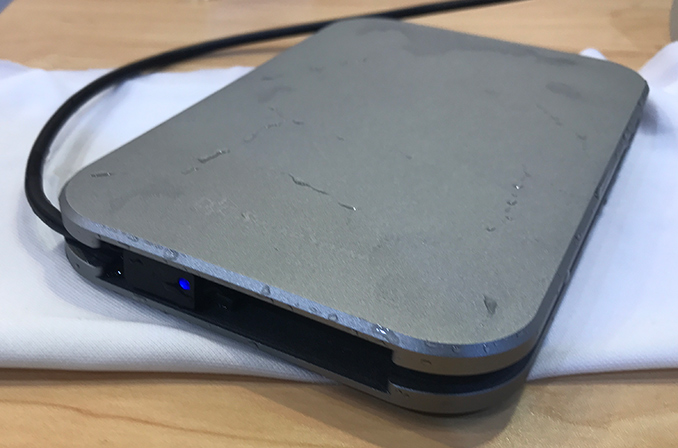

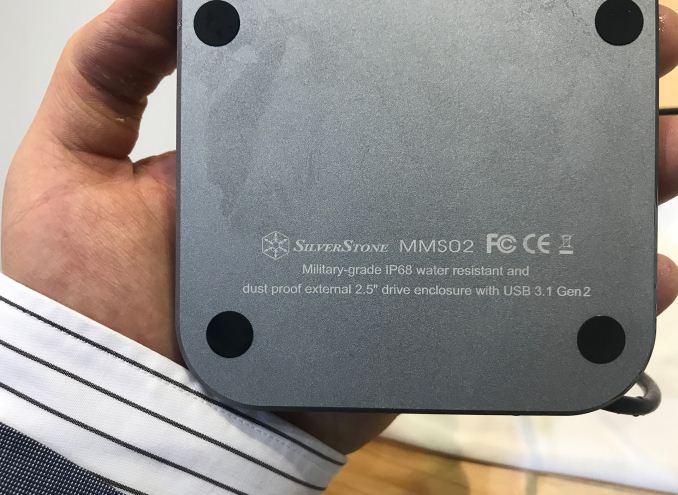
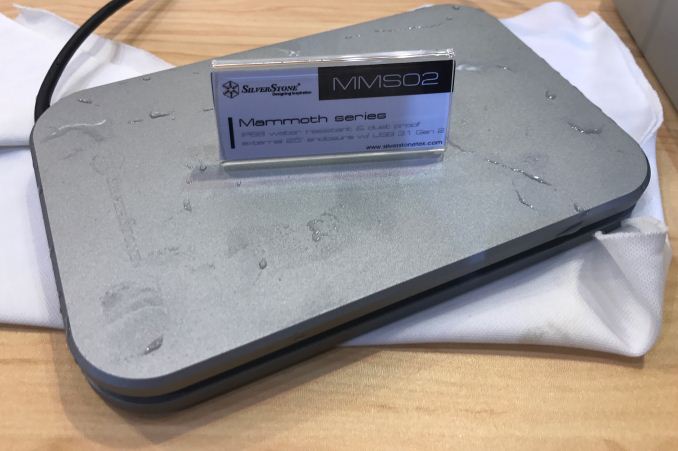
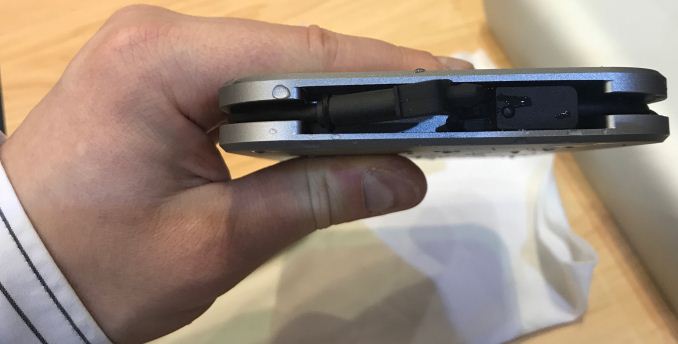
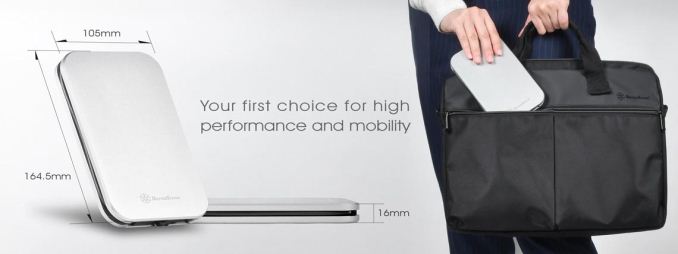

 Quote
Quote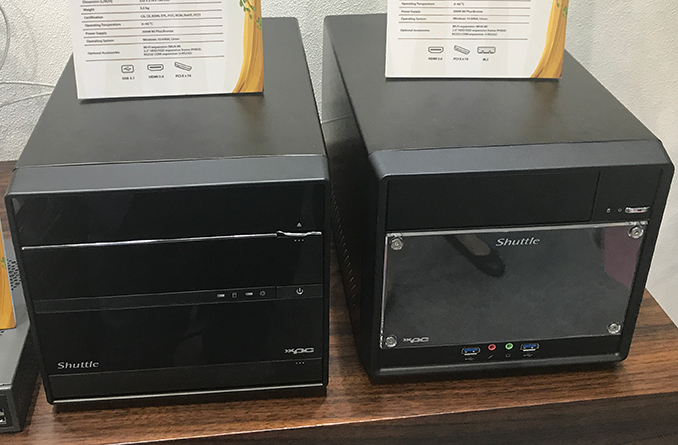
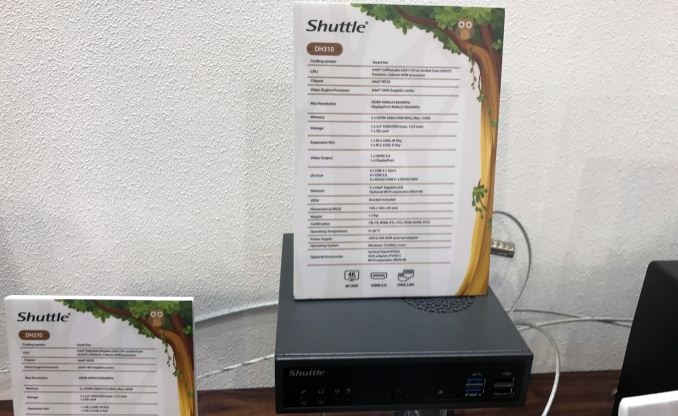
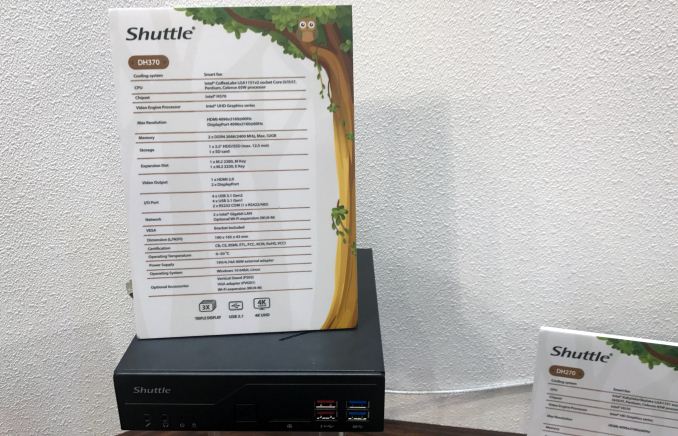
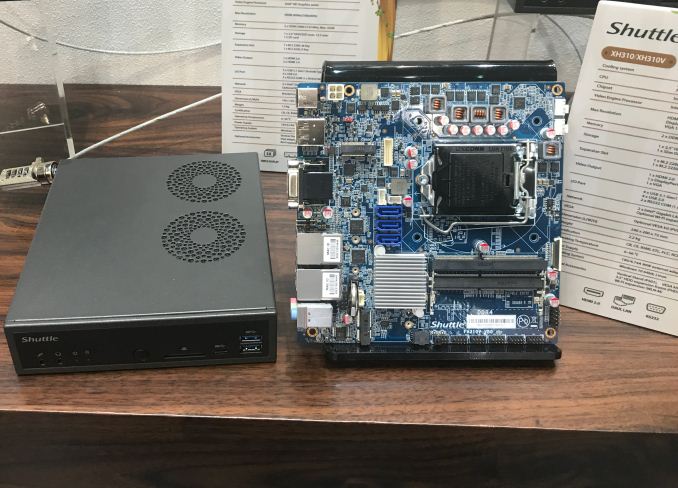
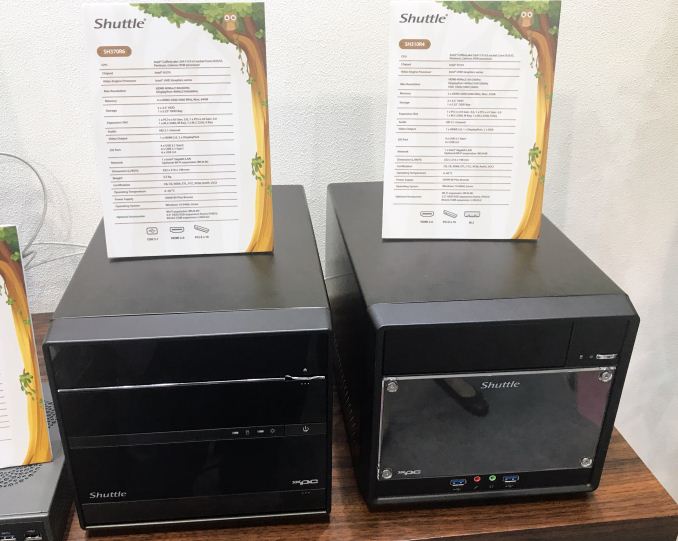
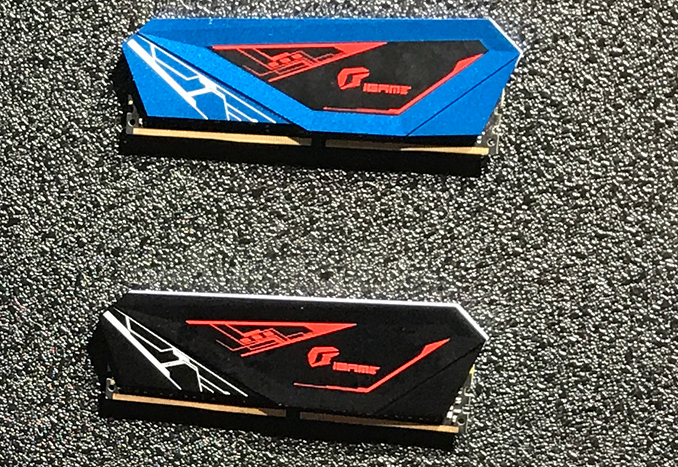
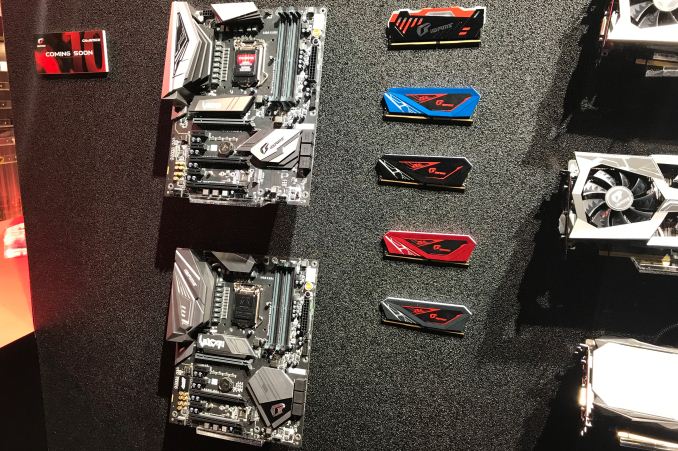
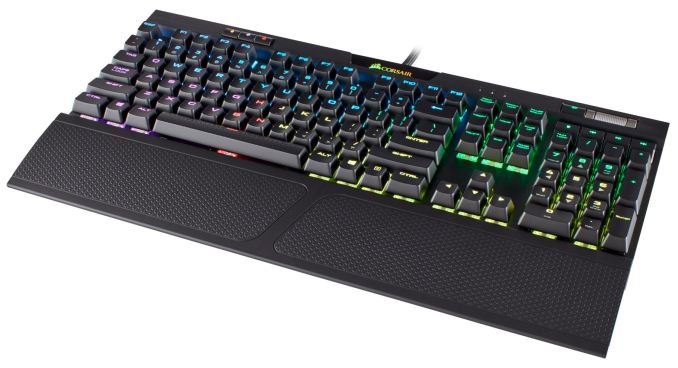
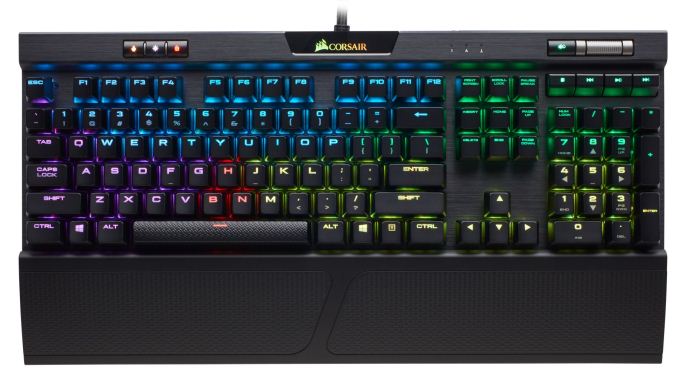
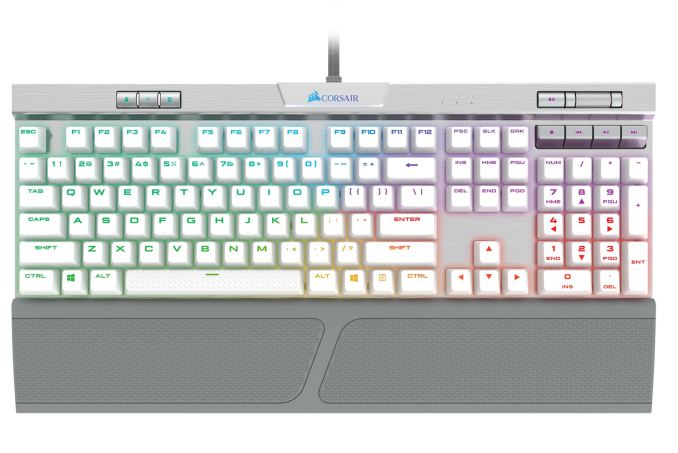
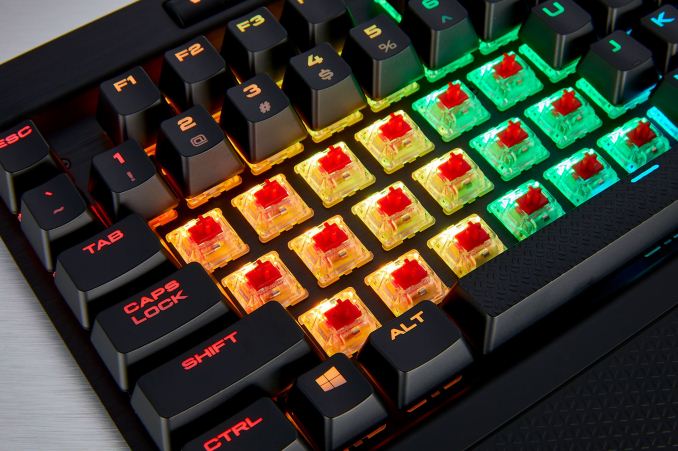


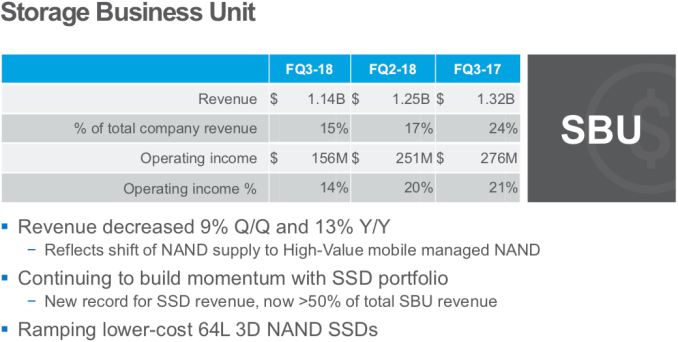
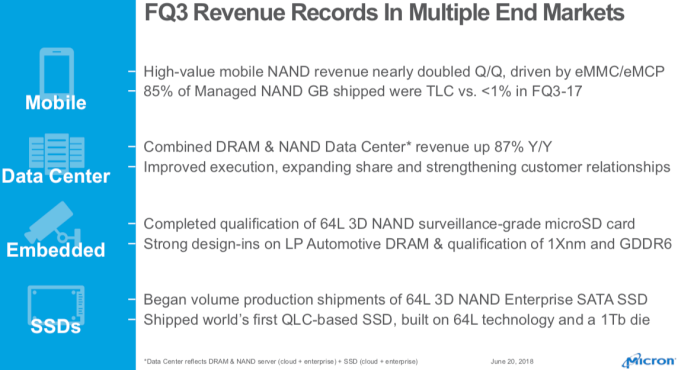
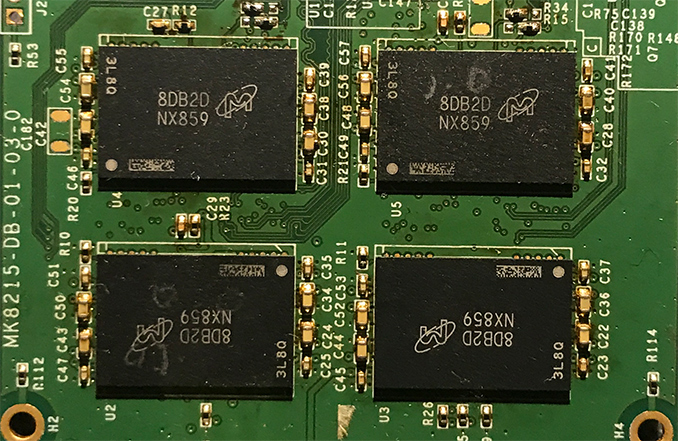
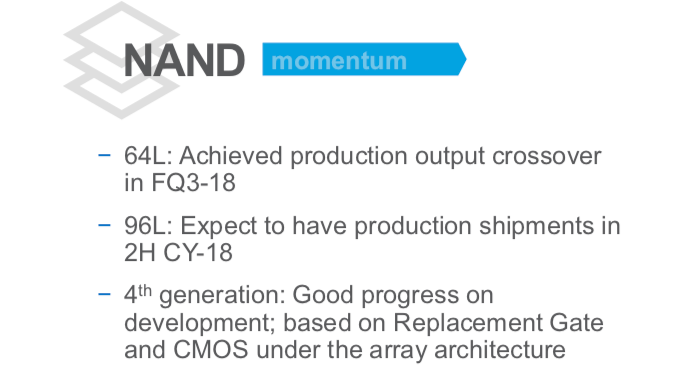
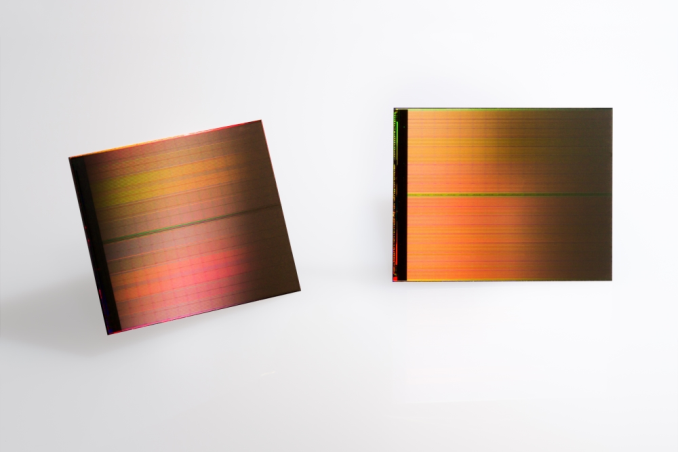

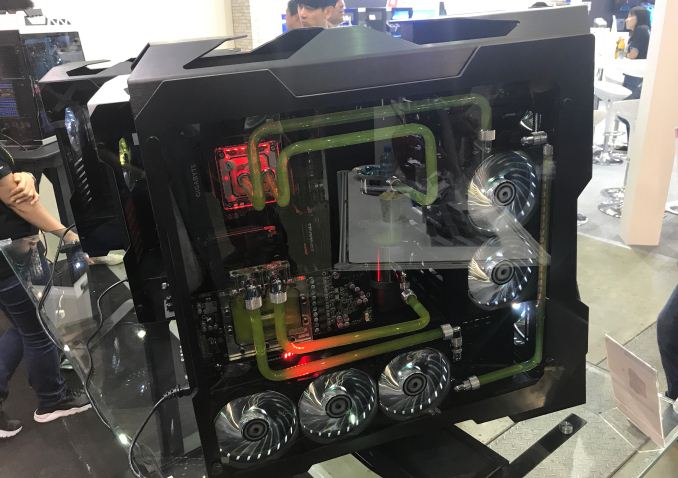


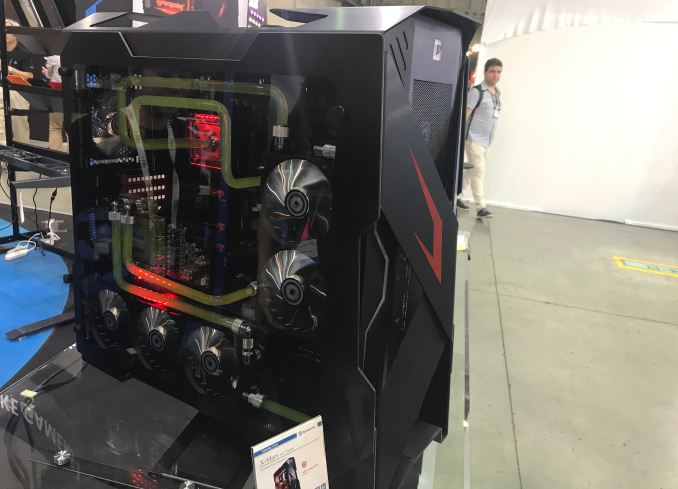
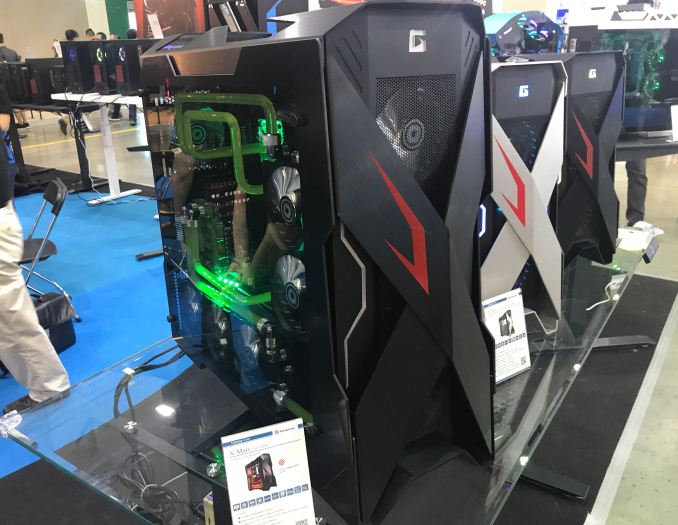
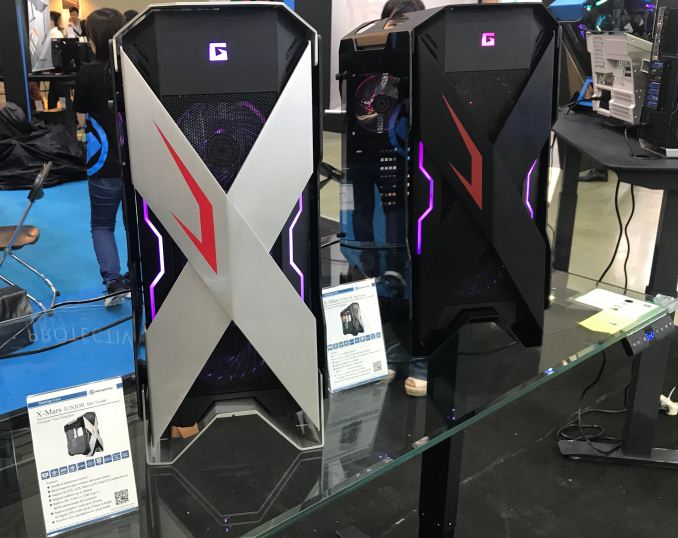
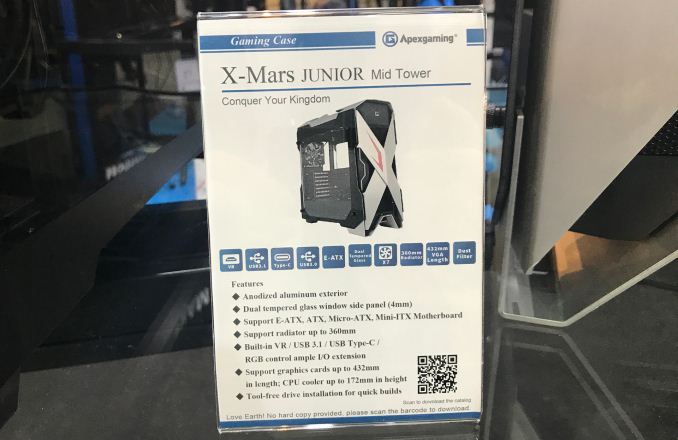
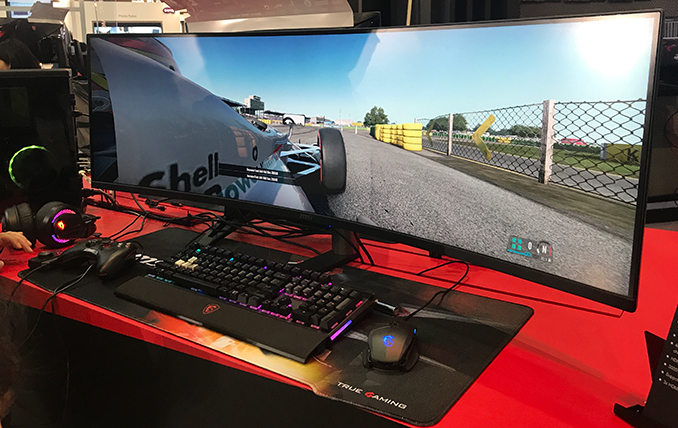
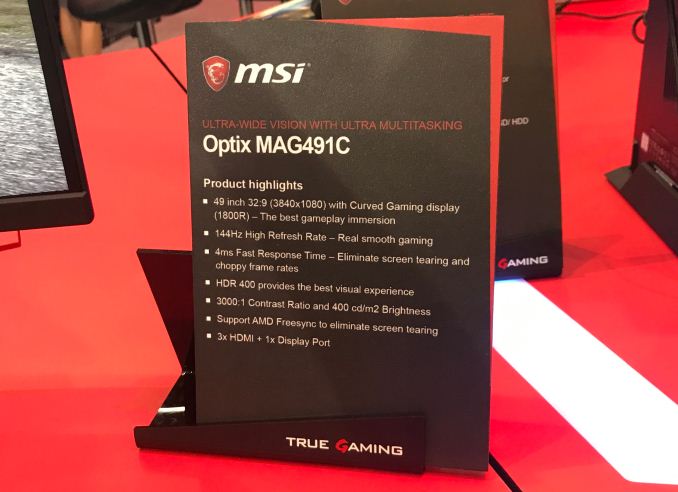

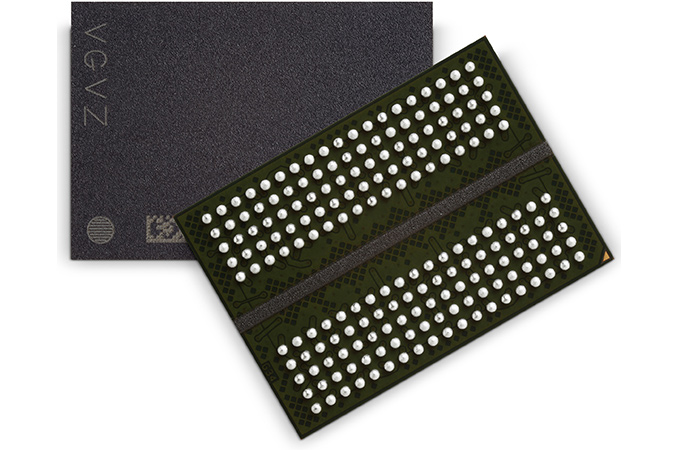

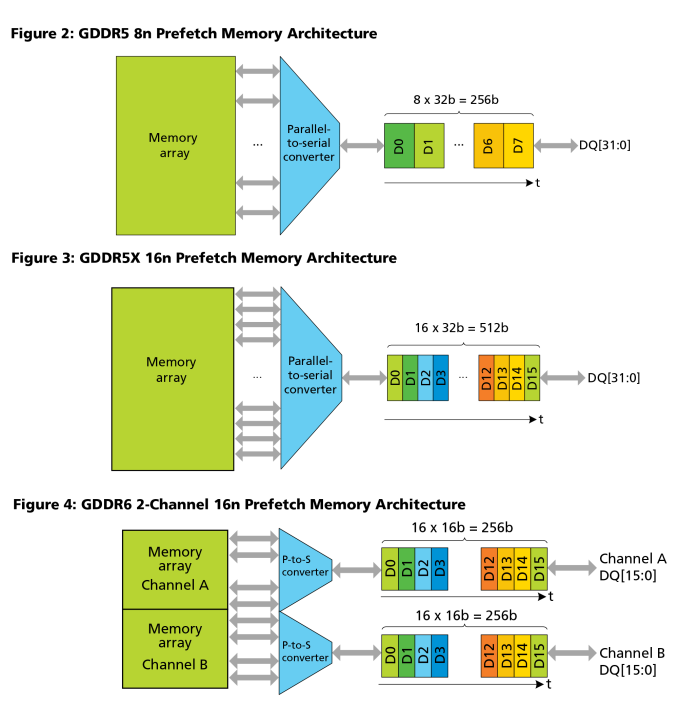
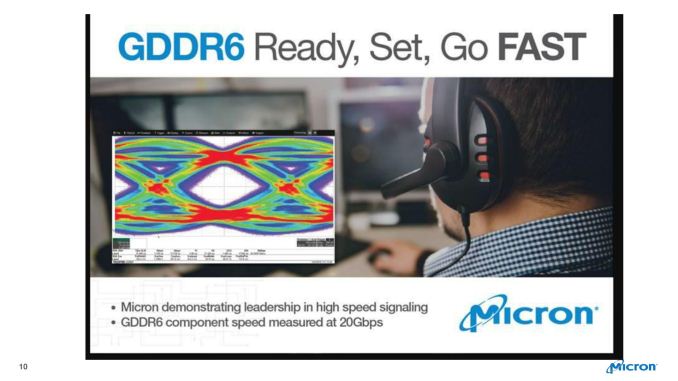








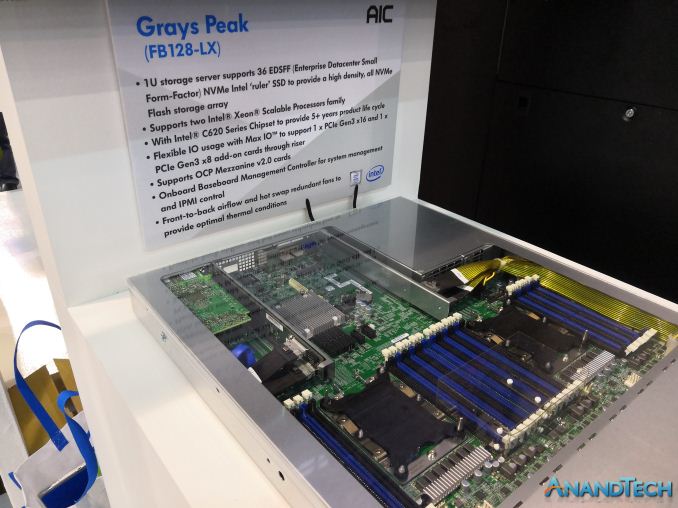
















Bookmarks